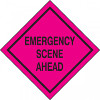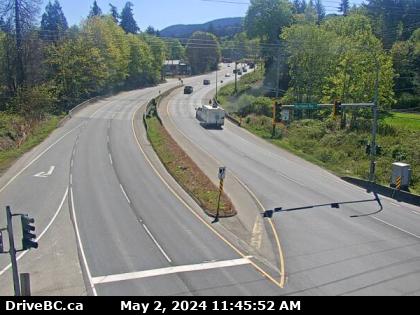 The rain is pounding down outside this morning as I sit looking out my living room window with tablet and coffee in hand. I think I'm fortunate to be retired because I am no longer on the highway investigating collisions in this weather. Of course, Murphy was listening...
The rain is pounding down outside this morning as I sit looking out my living room window with tablet and coffee in hand. I think I'm fortunate to be retired because I am no longer on the highway investigating collisions in this weather. Of course, Murphy was listening...
Report of a Collision
The tones of a radio page to the local volunteer fire department warble from the tablet courtesy of the internet. There's a four vehicle crash somewhere on Highway 19 between Summerset Road and Hillview Road. That's not too bad as there are only about 3 kilometres between those locations for emergency services to search.
Sometimes the reports are so inaccurate that multiple fire departments and paramedic stations must be called to insure that the scene is found quickly.

Think Before Reporting Crashes
If you think before reporting it can save time and avoid having to call volunteers away from work or family life. Smartphones today have GPS capability that will locate you precisely. If finding and relaying co-ordinates is too difficult, there's the What3Words app.
Make Way for Emergency Vehicles
The first fire truck to reach the highway at Northwest Bay Road reports that traffic is already backed up in the southbound lanes. What do you think is best asks the chief, go down the center or try the shoulder?

This is where taking a moment to think ahead comes in for all the drivers who are sitting in their vehicles wondering what is going on. Having developed the habit of stopping far enough back from the vehicle in front that pavement can be seen between the front of the hood and the rear tires of the vehicle ahead, there is plenty of room to move left or right.
Emergency vehicles may now drive down the center of the roadway and get to the scene with a minimum of difficulty.
Long Commercial Vehicles
If a long commercial vehicle leaves more room than normal, it's because the driver needs the space to get out of the way. Don't move over to fill that space in and gain an extra couple of metres!
Watch Behind You
Keep an eye on your rear view mirror so that you are ready to make room when it's needed. Signal your intent and stick to your decision so that emergency vehicle drivers know what you are going to do.
Hydroplaning in the Rain
The radio traffic suggested that this was a chain reaction crash prompted by the first driver hydroplaning in the downpour.
Social media posts also suggest that hydroplaning was the cause and that many drivers were failing to recognize the danger and slow down.
Water running across the roadway at an angle during heavy rainfall can be just as dangerous. The water "grabs" the first front tire to hit it and can slow it enough that the vehicle starts to rotate around that tire. Subsequent loss of control or sudden redirection of the vehicle path may cause a collision.
Two Seconds is not Enough
I think that to finish this story we need to consider sufficient following distance. In a case like this, two seconds is nowhere near enough. Perhaps if the three drivers following had left four to six seconds there would have been only one vehicle involved in the collision.
Share This Article
- Log in to post comments
